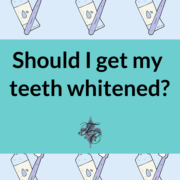What to do if your tooth is knocked out
What to Do If Your Tooth Gets Knocked Out
Having a tooth knocked out can feel like a nightmare. Your first reaction might be to panic, but try to stay calm so that you can act quickly to increase the chances of saving it.
Modern dentistry has advanced so much that a knocked-out tooth (also called an avulsed tooth) can often be reimplanted successfully – especially if you see a dentist within one hour of the injury. At Tim Chauvin, DDS & Associates, our Lafayette team has decades of experience with all kinds of dental issues, and we’re here to help.
Which Teeth Are Most at Risk?
The upper front permanent teeth are the most commonly knocked out. Baby teeth are usually not reimplanted, since they naturally fall out and are replaced by permanent teeth.
When a tooth is knocked out, the supporting nerves, blood vessels, and tissues are also damaged. Although nerves and vessels cannot be repaired, the bone can reattach to the root once the tooth is placed back in its socket. Because of this, a root canal is almost always required for a reimplanted tooth.
What to Do Immediately After a Tooth Is Knocked Out
Follow these steps right away to improve the chances of saving your tooth:
-
Handle with care: Do not touch the root of the tooth. Hold it by the crown (the chewing surface).
-
Rinse gently if dirty: Use milk to rinse the tooth, if available. If not, use water. Do not scrub or use fabric to clean it.
-
Keep the tooth moist:
-
Best option: Place it in a cup of milk.
-
Alternative: Place it in your mouth between your cheek and gum.
-
-
Try reinserting the tooth: Gently place it back into its socket if possible. If it doesn’t go in easily, keep it moist and see your dentist immediately.
Tip: The most important factor is time—do your best to get to a dentist within one hour.
What Happens at the Dentist?
When you arrive, your dentist will:
-
Rinse and examine the tooth and socket.
-
Splint the tooth to the surrounding teeth with a soft wire or composite material. Splints usually remain for 7–10 days, but if the bone is also fractured, it may need 6–10 weeks.
-
Perform a root canal, either immediately or after the tooth has stabilized, depending on how long the tooth was out.
After treatment, your dentist will schedule follow-ups at 3–6 months, then annually for 2–3 years to ensure the tooth remains stable and free of infection.
What If the Tooth Cannot Be Saved?
If the knocked-out tooth cannot be reimplanted, your dentist will discuss tooth replacement options such as:
-
Porcelain crowns
-
Dental implants
-
Bridges or dentures, depending on the situation
Emergency Dentist in Lafayette, LA
If your tooth is knocked out or broken, contact Lafayette Dentist Dr. Chauvin immediately. Acting quickly and following the steps above gives you the best chance of saving your tooth and protecting your oral health.







